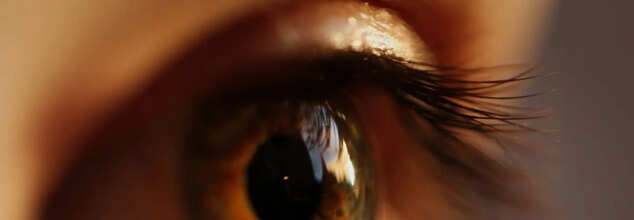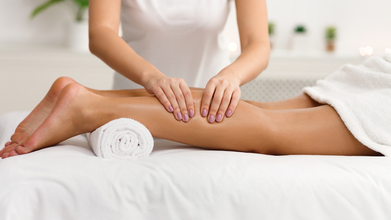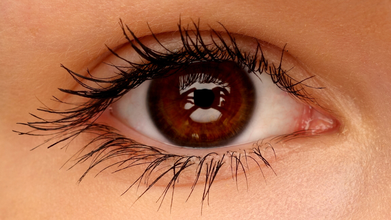- Health Conditions A-Z
- Health & Wellness
- Nutrition
- Fitness
- Health News
- Ayurveda
- Videos
- Medicine A-Z
- Parenting
- Web Stories
10 Best Yoga Exercises To Boost Your Vision

Credit: Canva
In an age dominated by screens and digital overload, our eyes are under constant strain—leading to issues like dry eyes, blurry vision, and fatigue. But could simple exercises, rooted in ancient yogic practices, offer relief? Eye yoga, a technique that involves controlled eye movements and relaxation methods, is gaining popularity as a natural way to improve focus, reduce tension, and potentially support better vision.
Best 10 Yoga Eye Exercises
Here are 10 simple but effective eye exercises through yoga:
1. Palming
Rub your hands together until they feel warm, then place them over your closed eyes. This simple exercise helps relax your eye muscles.
2. Blinking
Close and open your eyes quickly for about 10 seconds. This refreshes the eyes and improves moisture levels.
3. Up and Down Eye Movement
Move your eyes up and down slowly without moving your head. This exercise helps in improving flexibility.
4. Side-to-Side Movement
Shift your gaze from the left to the right, without moving your neck. It strengthens the eye muscles responsible for horizontal movement.
5. Diagonals
Move your eyes in diagonal directions—starting from the top left to bottom right, then top right to bottom left.
6. Circular Eye Movements
Roll your eyes in a clockwise and then counter clockwise motion. This exercise helps in enhancing the flexibility of the eye muscles.
7. Focus Shifting
Hold a finger close to your nose, then move it away while focusing on the finger. This improves focus and coordination.
8. Zooming
Focus on your thumb held at arm's length. Slowly move it closer to your face and back again. This strengthens your focus ability.
9. Figure 8
Imagine an infinity symbol in front of you. Trace it with your eyes for about a minute. This exercise improves flexibility and muscle strength.
10. Near and Far Focus
Alternate your gaze between a close object and a far-away object. This improves your eyes' ability to shift focus between varying distances.
Important Tips for Eye Health
Apart from practising these eye exercises to improve vision, it’s essential to follow these additional tips to maintain good eye health:
Maintain a balanced diet rich in vitamins A, C, and E, which are essential for eye health.
Take regular breaks during screen time using the 20-20-20 rule: look at something 20 feet away for 20 seconds every 20 minutes.
Stay hydrated to prevent dry eyes.
Wear UV-protective sunglasses when outdoors to shield your eyes from harmful rays.
Ensure proper lighting while working to avoid straining your eyes in dim light.
Get regular eye check-ups to monitor your eye health and prevent potential problems.
'Your Calves Are Your Second Heart' Doctor Reveals What Happens When You Lack Daily Movement

(Credit-Canva)
Many people have a one-dimensional view of their health, ‘if I eat healthy I don’t have to exercise as much’ or ‘since I exercise a lot, I can eat whatever I want’ but it doesn’t work like that. Everything we do and all the organs in our body are interdependent. So which body part does our heart depend on?
Most people only think about their main heart when they consider blood circulation, but there's a lesser-known helper: your calf muscles. These muscles, located in the back of your lower legs, act like a "second heart."
In a recent post, dietician Ms Manpreet Kalra, explained how important calf muscles are to our heart health.
She explained that when you walk, run, or simply move your ankles, your calf muscles squeeze. This squeezing action pushes the blood that has collected in your lower legs and feet back up towards your main heart and the rest of your body. It's a vital part of healthy circulation, preventing blood from just pooling in your legs due to gravity.
The Danger of Sitting Still
If you spend long hours sitting down—whether at a desk, on a plane, or watching TV—you essentially "shut down" your second heart. When your calf muscles aren't moving, they stop doing their job of pumping blood back up. This lack of movement leads to several problems:
Poor Circulation
When your calf muscles are inactive, they stop pumping, causing blood to start pooling in your lower legs and feet. Gravity takes over, meaning the blood has a hard time making the trip back up to your heart, slowing everything down.
Swelling and Fatigue
As blood and fluids linger in your legs, you might notice they feel heavy, tired, or appear visibly swollen. This feeling of dragging your feet is a direct result of your calves not properly assisting your body’s circulatory system.
Toxin Buildup
Normally, your blood removes waste, but when it slows down, toxins build up in your inactive muscles. These waste products are not cleaned out efficiently, which can contribute to muscle discomfort and general poor health over time.
Increased Risk of Blood Clots
The biggest danger is an increased risk of Deep Vein Thrombosis (DVT), which is when a blood clot forms in a deep vein, usually in the legs. These clots can be very dangerous if they break loose and travel to the lungs.
Simple Ways to Activate Your "Second Heart"
The good news is that keeping your calf muscles active is easy and requires only small changes to your daily routine. Movement is the key to keeping your circulation flowing and your heart safe. Here are simple actions you can take:
Move Regularly
Try to walk or stretch for a few minutes every 45 to 60 minutes if you have a desk job. Even standing up and sitting down a few times helps.
Do Calf Raises
While standing, rise up onto your toes and then lower your heels back down. Doing this simple exercise daily—even while brushing your teeth—is great for strengthening and activating your calves.
Change Positions
Avoid sitting with your legs crossed for long periods, as this can squeeze veins and restrict blood flow.
By taking care of your calves, you're not just taking care of your legs—you're helping your whole circulatory system and protecting your main heart!
This Sign Of Alzheimer's Disease That Can Show Up 25 Years Before Diagnosis: Study Finds

(Credit-Canva)
Dementia is more common than you think. According to the Alzheimer’s Disease International, there were over 55 million people in the world living with dementia in 2020. According to the organization, this number is said to double every year for 20 years, and this number is said to reach 78 million in 2030.
There are many different types of dementia, one of which is Alzheimer’s disease. It is the most common form of dementia. While there is no cure for dementia, catching it early can help people manage the condition. But with the vague symptoms of Alzheimer’s, early diagnosis is difficult.
Researchers have found a possible new sign of Alzheimer's disease that could show up incredibly early, which is poor spatial navigation. Think of spatial navigation as your brain's ability to figure out where you are and how to get where you're going, your internal GPS.
This difficulty could appear up to 25 years before the more commonly known symptoms, like losing your memory. Finding a warning sign this early is a huge step because getting a diagnosis sooner is vital for beginning treatment and for scientists working to find ways to prevent the disease.
What Does Knowing Your Surrounding Mean?
A team of scientists from the University College London (UCL) conducted a study to look for these early signs. They worked with around 100 people between the ages of 43 and 66. These people were chosen because they had a higher risk of getting Alzheimer's later in life. This risk was due to things like having a family member with the disease, carrying a specific gene (called the APOE-ε4 allele) linked to higher risk, or having risk factors in their lifestyle.
An important point to note was that every single person in the study showed no signs of Alzheimer's, they were perfectly healthy and were about 25 years younger than the age doctors would typically expect dementia to start for them.
To test their navigation skills, the participants put on virtual reality (VR) headsets and were asked to find their way around a computer-generated environment. The results showed that the people who were at higher risk for Alzheimer's had a much harder time completing the VR navigation task. They essentially got lost or struggled more to find their way.
Early Sign Of Alzheimer’s Disease
Importantly, these same people did just fine on other types of tests, including those that check memory. This suggests that having trouble with spatial navigation could be one of the very first things to go wrong in the brain, years or even decades before you start forgetting things.
The experts said that this change might be the earliest possible signal that someone is starting to move from being healthy to showing the first signs of the disease. The researchers are now planning to turn this VR test into a tool that doctors could use to help diagnose the disease earlier.
explained that these findings are exciting for two main reasons. First, they allow doctors to spot the start of Alzheimer's much sooner, which is critical for making treatments work better. Second, the VR test is based on how special cells in the brain in an area called the temporal lobe handle space and location.
This means the test helps connect the dots between tiny changes in the brain's cells and the actual symptoms people experience. This connection is a huge barrier in current Alzheimer's research.
The study also noticed that men showed a bigger drop in their spatial navigation skills than women did. This suggests that more research is needed to understand why men and women might be affected differently by Alzheimer's.
The Alzheimer's Society agreed, emphasizing that early and accurate diagnosis is essential, and this study clearly shows that problems with navigation could be one of the very first signs to watch out for.
What is the 20-20-20 Rule For Healthy Eyes?

Credits: Canva
So far, we know the 6-6-6 rule for walking, but there is something new for eye health too. It is called the 20-20-20 rule. In our day to day lives, our screen time has increased, in fact, screens have become an integral part of our life, which means we must take extra care of our eye health and this 20-20-20 rule will help you.
What Is 20-20-20 Rule?
This rule says that for every 20 minute that you spend on looking at the screen, you must take a 20 second break to look at something 20 feet away.
While you won't know how far is 20 feet from your desk, the key is not to actually stand 20 feet apart, but to take a break from your screen and be far from it, especially if you have a smaller work space and don't have the time to roam around.
You can set an alarm every 20 minutes to remind yourself for a well deserving break that you deserve.
Is the 20-20-20 Rule Supported By Research?
The American Academy of Ophthalmology says that looking at digital devices won't necessarily damage your eyesight, but it can cause strain and unpleasant symptoms. Humans usually blink around 15 times each minute, and when we stare at our screens, the frequency decreases half or a third. This is why our eyes feel dry, irritated, and we feel that our eyes are getting tired.
What Happens When You Strain Your Eye?
If you have an eyestrain, you may experience pain, tiredness, itching, burning of your eyes. Furthermore, you may experience these following symptoms:
- dry eyes
- watery eyes
- blurred vision
- double vision
- headaches
- soreness in the neck, shoulders, or back
- sensitivity to light
- difficulty concentrating
- difficulty keeping eyes open
What Can You Do To Avoid Straining Your Eyes?
Maintain proper distance: Sit about 25 inches (roughly an arm’s length) away from your screen and position it slightly below eye level.
Cut the glare: Use a matte screen filter or adjust your lighting to reduce reflections.
Take regular breaks: Follow the 20-20-20 rule — every 20 minutes, look at something 20 feet away for at least 20 seconds.
Keep your eyes moist: Use over-the-counter lubricating eye drops and consider a humidifier if the air feels dry.
Blink more often: Frequent blinking helps keep your eyes naturally lubricated.
Adjust brightness: Match your screen’s brightness to the surrounding light to minimize strain.
Clean your screens: Dust and fingerprints can make it harder to see and increase eye fatigue — wipe them regularly.
Give contacts a rest: Alternate between contact lenses and glasses to reduce dryness and irritation.
Follow lens hygiene: Always wash your hands before handling contacts and avoid sleeping in them to prevent infections.
© 2024 Bennett, Coleman & Company Limited

